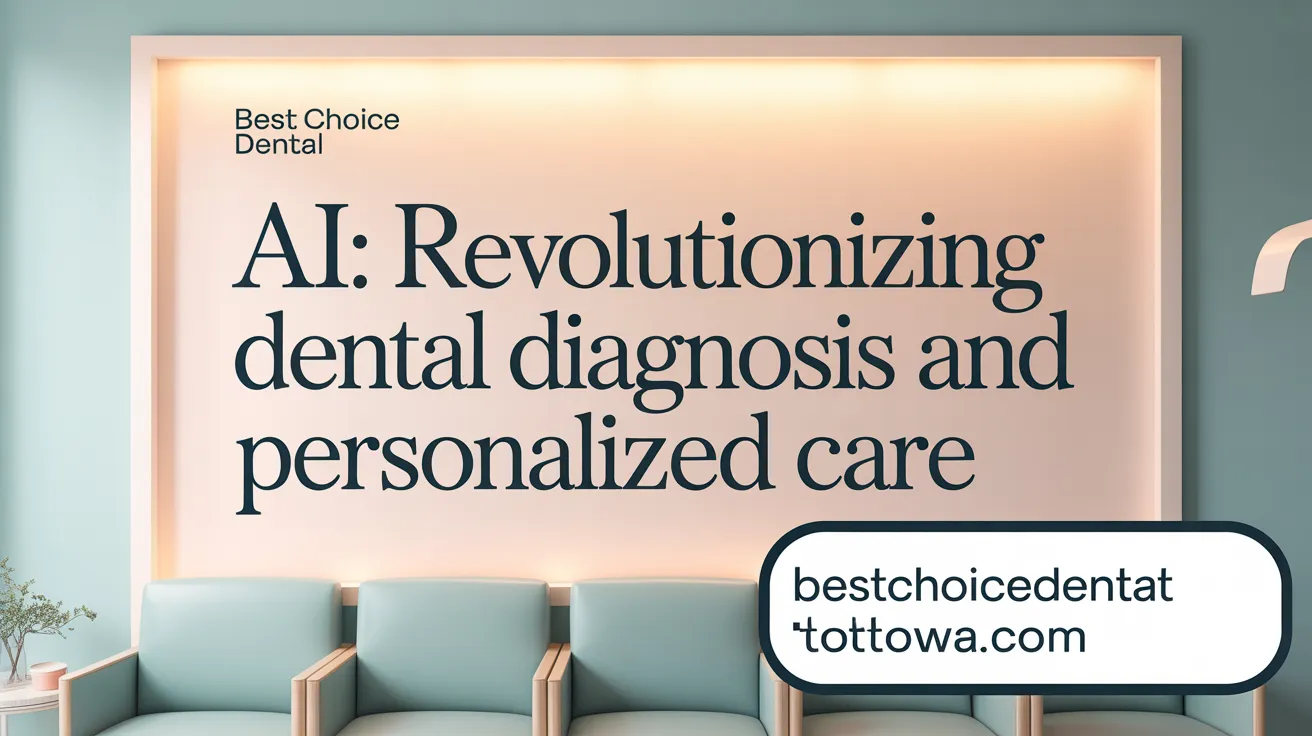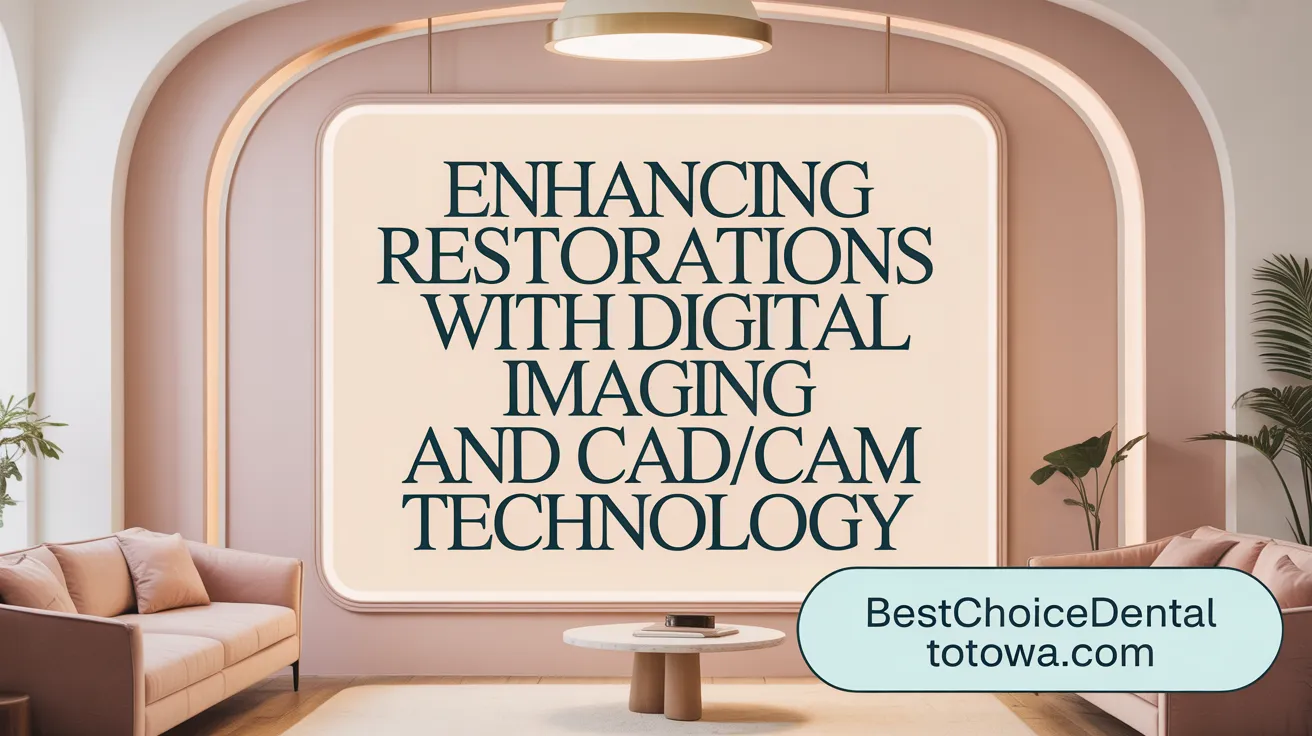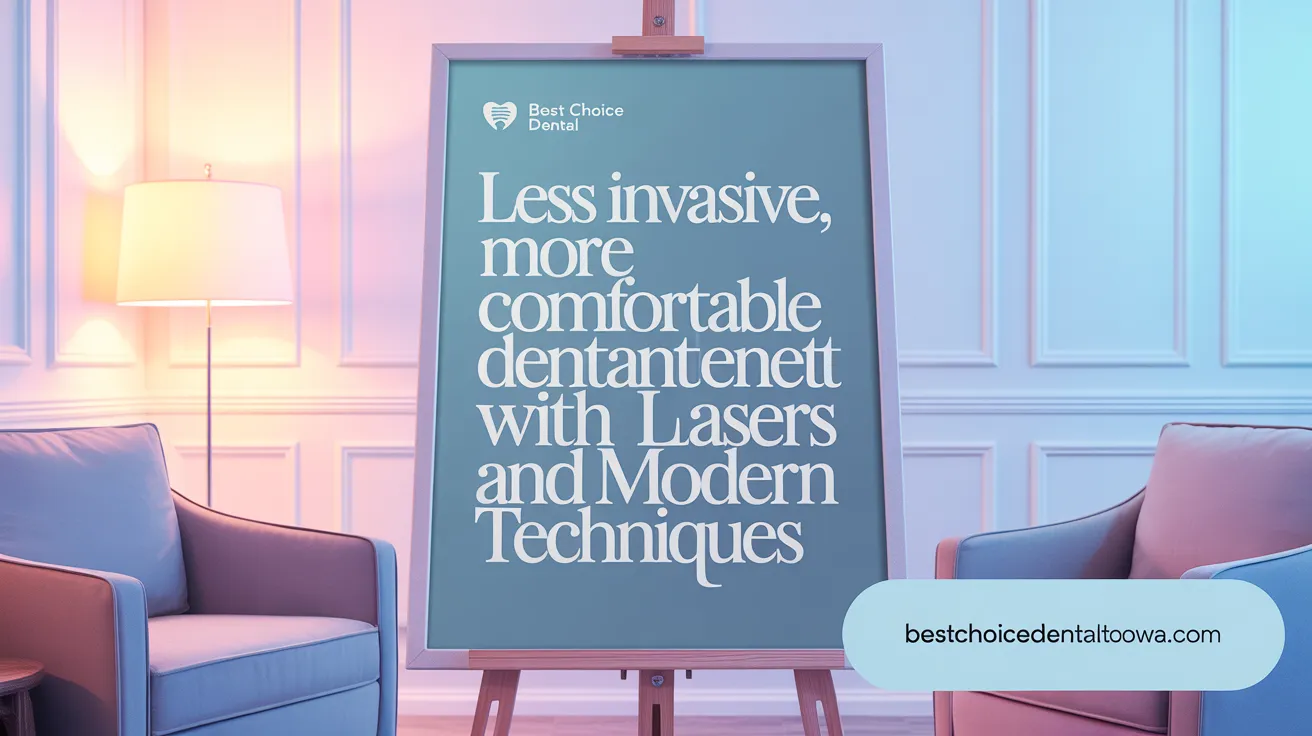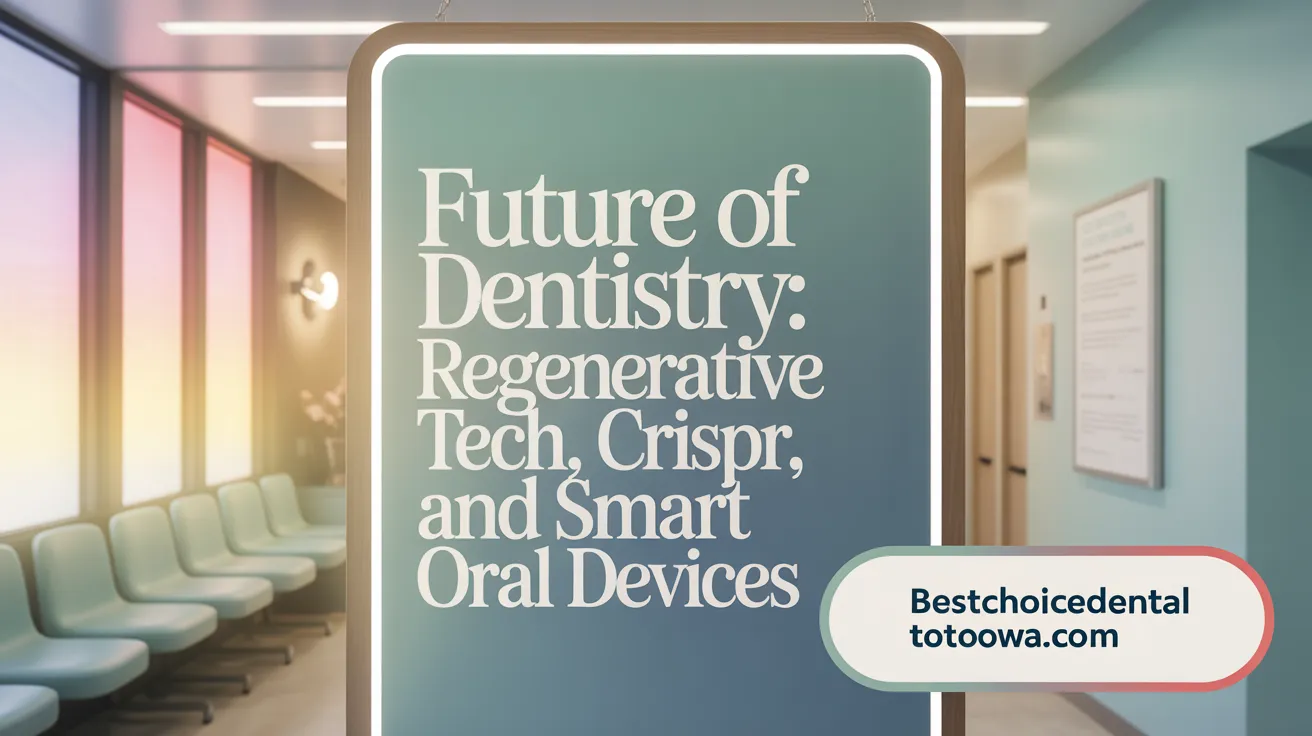A New Era in Dental Care
The landscape of dentistry is rapidly evolving with groundbreaking technologies that are reshaping how dental care is delivered, diagnosed, and experienced. From artificial intelligence enhancing diagnosis accuracy to 3D printing revolutionizing the fabrication of dental restorations, modern advancements promise not only improved patient outcomes but also greater accessibility and comfort. This article explores the cutting-edge technologies poised to define the future of dentistry and what patients and professionals can expect in years to come.
Artificial Intelligence: Transforming Diagnosis and Personalized Treatment

How is AI transforming diagnosis and treatment planning in dentistry?
Artificial intelligence (AI in dentistry) is revolutionizing the way dental professionals detect and plan treatments by enabling earlier and more accurate diagnoses. AI algorithms analyze radiographs, digital scans, and microscope slides to identify early-stage dental caries , gum disease, and oral cancers with greater precision than traditional methods. This early detection empowers dentists to intervene promptly, improving treatment success and preserving oral health.
In what ways does AI assist orthodontic care?
AI significantly enhances orthodontic treatment by helping clinicians create personalized and optimized treatment plans. AI models analyze patient-specific data to predict treatment outcomes, facilitating faster and more precise orthodontic adjustments. This technology reduces the guesswork traditionally involved in aligning teeth, resulting in more efficient, accurate, and patient-centered care, thanks to advances in personalized orthodontic treatment with AI.
How does AI integrate with genomic data to improve dental care?
By combining AI with genomic data, dental practitioners can personalize dental care at a molecular level. This integration enables the identification of genetic predispositions to oral diseases, allowing for tailored preventive measures and treatment strategies that consider a patient's unique genetic makeup. Such precision medicine approaches promise higher success rates and customized oral healthcare, as explored in personalized dental treatments with AI and genomics.
Real-world applications of AI in dental imaging and diagnostics
AI is operational in several practical dental contexts today. It assists dentists in analyzing digital X-rays and intraoral images to detect cavities and periodontal issues earlier than ever before. Moreover, AI supports the interpretation of complex scans to spot oral cancers in their initial stages, offering patients targeted treatment options. With continuous advancements, AI tools are also streamlining administrative tasks and enhancing diagnostic workflows, making dental care more efficient and accessible through technologies like AI in dental diagnosis and machine learning in dental treatment plans.
Digital Imaging and CAD/CAM: Precision and Efficiency in Dental Restorations

What advancements have digital imaging brought to dental diagnostics?
Digital imaging technologies, such as digital X-rays and 3D imaging, have revolutionized dental diagnostics by providing high-resolution images with significantly lower radiation exposure. This advancement allows dentists to detect cavities, gum disease, and other oral health problems earlier and with greater accuracy. Enhanced imaging leads to improved treatment planning and better patient outcomes.
How has CAD/CAM technology changed dental restorations?
CAD/CAM (Computer-Aided Design and Computer-Aided Manufacturing) technology has transformed dental restorations by enabling rapid and precise design and fabrication of custom crowns, bridges, and veneers. Many restorations can now be created and placed in a single dental visit, greatly reducing treatment time and increasing patient convenience without compromising quality.
What is the role of 3D printing in dentistry?
3D printing plays a vital role by allowing rapid, precise, and cost-effective production of a wide range of dental prosthetics. Crowns, dentures, orthodontic models, and surgical guides can be custom-manufactured to the exact specifications needed for each patient. This technology streamlines workflows in dental laboratories and clinics, enhancing efficiency and reducing the wait for patients.
How do intraoral cameras improve dental care?
Intraoral cameras provide detailed real-time images from inside the mouth, allowing dentists to closely examine areas that are difficult to see. These images are also shared with patients, improving their understanding of their oral health status. This fosters better communication, increases patient engagement, and supports informed decision-making about treatment options.
Together, these cutting-edge digital tools integrate seamlessly to enhance diagnostic precision, shorten treatment timelines, and improve patient education in modern dental care.
Minimally Invasive Procedures and Laser Dentistry: Enhancing Patient Comfort

How does laser dentistry improve dental procedures?
Laser dentistry offers precise and minimally invasive treatment options for various dental issues. It is widely used in laser dentistry benefits, cavity preparation with lasers, gum reshaping, and teeth whitening. The key benefits include reduced bleeding, less pain during and after treatment, and significantly faster healing times compared to traditional methods.
What are minimally invasive dental techniques and their advantages?
Minimally invasive techniques, such as air-abrasion with Kinetic Cavity Preparation technology and the application of advanced biomaterials, aim to preserve as much healthy tooth structure as possible. Air-abrasion uses a gentle stream of powder to remove decay with less discomfort and avoids the need for the traditional dental drill. Biomaterials used in these procedures promote better healing and reduce the overall treatment time and cost.
How do these technologies affect patient experience?
These advancements greatly improve the patient experience by reducing pain and anxiety associated with dental visits. Treatment is less invasive, causing fewer complications and promoting faster recovery. This makes dental care more tolerable and accessible, ultimately enhancing patient satisfaction. For more on patient experience in dentistry.
Technologies promoting less invasive therapy and faster healing
Laser dentistry and air-abrasion stand out as innovative technologies advancing minimally invasive dentistry. When combined with regenerative biomaterials and platelet-rich growth factors in healing, they accelerate tissue and bone healing. This integration contributes to safer procedures with quicker results, supporting a modern approach focused on patient comfort and effective care.
Emerging Technologies: Regenerative Dentistry, CRISPR, and Smart Oral Care Devices

What is regenerative dentistry and its potential impact?
Regenerative dentistry research focuses on enabling natural tooth repair and even growth. Through the use of stem cells and advanced biological treatments, this field aims to stimulate teeth to heal themselves. This breakthrough has the potential to reduce reliance on traditional prosthetics like crowns or dentures. If successful, it could lead to less invasive treatments and improved long-term oral health outcomes.
How might CRISPR technology transform dental disease prevention?
CRISPR for dental disease prevention is an emerging technology with promising applications in dentistry. It may target genes linked to the bacteria responsible for dental caries (cavities) and periodontal diseases. Additionally, CRISPR holds potential to alter genes involved in oral cancers. By directly addressing the genetic causes and contributors to these conditions, CRISPR could revolutionize prevention methods, offering more precise and effective dental disease control.
What role do smart dental devices play in oral health?
Smart toothbrush technology and other connected oral care devices enhance daily dental hygiene by providing real-time feedback. Equipped with sensor-equipped toothbrushes and companion smartphone apps, these devices track brushing technique, pressure, and coverage. This personalized guidance encourages better habits that reduce plaque buildup and cavity risk. Such technology empowers individuals to improve oral health proactively, bridging in-office dental care with everyday preventive practices.
Future prospects of integrating advanced biotech and smart technology in dentistry
The convergence of regenerative dentistry advancements, CRISPR gene-editing, and smart oral care tools heralds a new era in dentistry. Combining biological self-repair mechanisms with smart monitoring devices could lead to personalized, minimally invasive, and highly effective dental care regimens. As research progresses, this integration may drastically reduce the incidence of dental diseases and transform how oral health is maintained and restored.
Telehealth and Virtual Technologies: Expanding Access and Enhancing Education
How is teledentistry transforming dental care delivery?
Teledentistry platforms enable remote consultations, diagnostics, and follow-ups via secure video communication. This technology significantly increases access for patients living in rural areas or those with mobility challenges by removing the need for physical visits. Patients can receive timely dental advice and care without traveling long distances, thus improving convenience and continuity of care.
What are the applications of AR and VR in dentistry?
Augmented Reality (AR) is utilized for treatment planning and patient education by overlaying virtual images that preview potential post-treatment results. This aids dentists and patients in decision-making prior to procedures. Virtual Reality (VR) offers immersive simulation environments for dental students, enhancing their training with realistic practice scenarios. Additionally, VR provides calming virtual experiences to reduce anxiety for patients undergoing dental treatments.
What benefits do these virtual technologies bring to patient care and education?
AR and VR technologies improve dental education by delivering interactive, hands-on training that boosts practitioner proficiency. For patients, these tools increase engagement and understanding by visually demonstrating oral conditions and treatment options. VR also creates a relaxing environment that helps alleviate fear and stress during dental visits, thereby enhancing overall patient experience and satisfaction.
A Technological Leap Towards Better Oral Health
As dentistry continues its swift technological advancement, patients and practitioners alike are witnessing significant improvements in diagnosis accuracy, treatment efficiency, and overall care experience. Innovations ranging from artificial intelligence and 3D printing to regenerative medicine and virtual care platforms are carving a future where dental treatments are more precise, personalized, and accessible than ever before. Embracing these technologies not only elevates patient outcomes but also transforms dentistry into a more patient-centered, less invasive, and highly sophisticated healthcare field. Staying abreast of these changes ensures that dental care in the coming years will be defined by smarter tools, better comfort, and broader reach, ultimately fostering healthier smiles worldwide.
